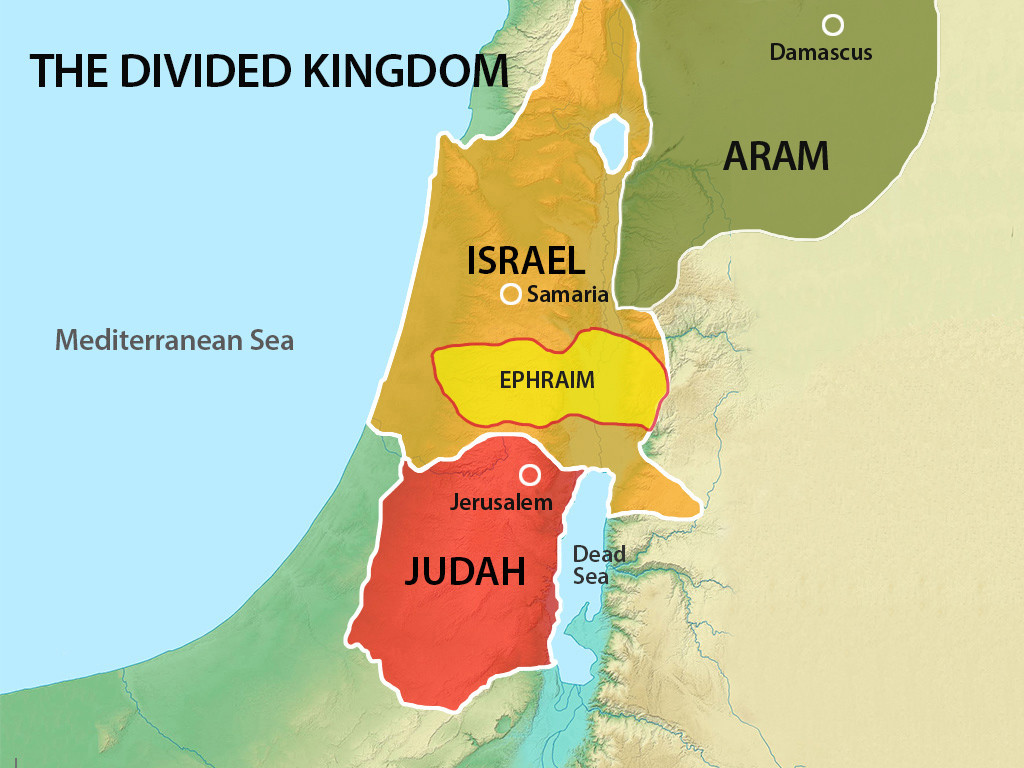After he has served you six years, you must let him go free. Your fathers, however, did not listen to me or pay attention to me. –Jeremiah 34:14
Build sentences in the order of 5W1H
The world during the Old Testament times was truly a survival of the fittest. The people of nations defeated in war mostly had to live as slaves to the victors. Yet, God commanded that if anyone worked as a slave for six years, they should be freed from their slave status and released. However, the people of the Kingdom of Judah forgot their own suffering as slaves in Egypt and did not keep God’s command. It seems this was not the only command they ignored.
Eventually, the Kingdom of Judah fell around 586 BCE. This time, it was due to King Nebuchadnezzar of the Neo-Babylonian Empire (referred to as the Chaldean Empire in the Bible), which had emerged as a new power after destroying Assyria in 612 BCE.
The history of the divided kingdom, from the time of King Solomon, when the Israeli state was most prosperous and expansive, is recorded in the Books of 1 Kings and 2 Kings. On the other hand, 1 Chronicles and 2 Chronicles can be thought of as independent historical records of the remaining southern Kingdom of Judah until the end.
From this time, the people of southern Judah began to be referred to as Jews, partly because most of them were from the tribe of Judah, one of the twelve tribes. However, the term has varied meanings depending on the time and context, including converts to Judaism in the Hellenistic period or even referring to Ashkenazi Jews in modern times. Ashkenazi Jews refer to Jews who lived in Europe, especially in central Europe like Germany and Austria-Hungary, and in Eastern Europe like Russia, Ukraine, Belarus, Poland, Lithuania. Today, most Jews who have resettled in Israel or migrated to the United States, Canada, South America, and other places are descendants of these people.

When the noun ‘Name’ is used as a verb, it becomes a verb meaning ‘to name’ or ‘to give a name.’ Therefore, if someone says “Adam named his wife,” one might immediately ask what name he gave her. A sentence that answers this curiosity is “Adam named his wife Eve,” and this type of sentence structure is referred to as a type 5 sentence in English grammar.
Subject (S) + Verb (V) + Object (O) + Object Complement (O.C)
Verbs that need both an object and an additional element to complete their meaning are known as complex transitive verbs. These verbs can also be referred to as attributive ditransitive verbs or resultative verbs. Similar to how linking verbs need a complement to form a complete sentence, these verbs require more than just an object to fully convey their intended meaning. They necessitate an extra word, known as the object complement, to provide a complete idea. We can understand this concept by likening it to an equation: just as in a sentence where the subject (S) equals the complement (C), in sentences formed by these verbs, the object (O) is made complete by the object complement (OC)
Another perspective is to consider that the (who+what) enclosed in parentheses forms a sentence on its own and is inserted into the sentence created by the preceding subject and verb.
S+V + (who+what) + [where+why+how+when]
The reason type 5 sentences can be challenging is because they have a structure that combines two sentences. That is, the S+V + (who+what) essentially combines a sentence formed by S+V with another sentence formed by who and what. Let’s use the following biblical passage as an example:
Adam named his wife Eve, because she would become the mother of all the living. – Genesis 3:20
The passage “Adam named his wife Eve.” can be separated into two sentences:
a. Adam named his wife. b. His wife is Eve.
These two sentences combine or condense to form:
c. Adam named his wife Eve.
Thus, the essence of a type 5 sentence is that the object and object complement semantically relate like the example above [Subject + Verb or Be verb + Complement]. In other words, in our syntax, (who + what) can form an independent sentence, and this sentence can also be condensed into the form of an object and object complement. Therefore, the object complement (what) can appear in six different forms.

According to our syntax, the interest in “what” is located in the noun area, so a noun or an adjective (with the noun omitted) can follow. In this sense, object complements can be nouns, adjectives, participles in the form of adjectives, and infinitives in noun form. Let’s now explore examples of these object complement types with typical verbs.
- Name type verbs primarily use nouns as object complements. Key verbs include appoint, call, select, name, elect.
“Adam named his wife Eve, because she would become the mother of all the living.” – Genesis 3:20
“God called the light ‘day,’ and he called the darkness ‘night.’” – Genesis 1:5
2. Keep type verbs mainly use adjectives as object complements, such as leave, paint, keep, make.
“You are to bring into the ark two of all living creatures, male and female, to keep them alive with you.” – Genesis 6:19
“Now leave me alone so that my anger may burn against them and that I may destroy them.” – Exodus 32:10
3. Want type verbs: These verbs mainly use nouns as object complements and often pair with infinitives that have shifted from verbs to nouns.
“I want you to swear by the LORD, the God of heaven and the God of earth.” – Genesis 24:3
These verbs typically imply a desire or expectation, such as want, wish, like, intend, expect, allow, ask, cause, compel, forbid, permit, urge, warn.
“The people expected him to swell up or suddenly fall dead.” – Acts 28:6
“One man’s faith allows him to eat everything, but another man, whose faith is weak, eats only vegetables.” – Romans 14:2
“Jesus strictly warned them not to tell this to anyone.” – Luke 9:21
“I ask you to forgive your brothers the sins and the wrongs they committed in treating you so badly.” – Genesis 50:1
4. Let type: Some verbs can take infinitives as object complements and omit ‘to’. These are known as causative verbs, such as have, make, let, bid.
“Don’t let anyone look down on you because you are young, but set an example for the believers in speech, in life, in love, in faith and in purity.” – 1 Timothy 4:12
“I hope to visit you while passing through and to have you assist me on my journey there.” – Romans 15:24
5. See type verbs: Like causative verbs, perception verbs also omit ‘to’ in this usage, implying seeing, discovering, feeling, hearing, etc.
“I saw him attack the ram furiously, striking the ram and shattering his two horns.” – Daniel 8:7
“When they heard him speak to them in Aramaic, they became very quiet.” – Acts 22:2
6. Present and past participle: In fact, using progressive form verbs can create more vivid expressions than using infinitives with perception verbs. We’ll discuss this further, but for now, just know you can substitute the base form of the verb with its progressive form.
“Then I heard him speaking, and as I listened to him, I fell into a deep sleep, my face to the ground.” – Daniel 10:9
“But when they saw him walking on the lake, they thought he was a ghost. They cried out.” – Mark 6:49
“A man found him wandering around in the fields and asked him, ‘What are you looking for?’” – Genesis 37:15
“They found the stone rolled away from the tomb.” – Luke 24:2
“We found the jail securely locked, with the guards standing at the doors; but when we opened them, we found no one inside.” – Acts 5:23


답글 남기기